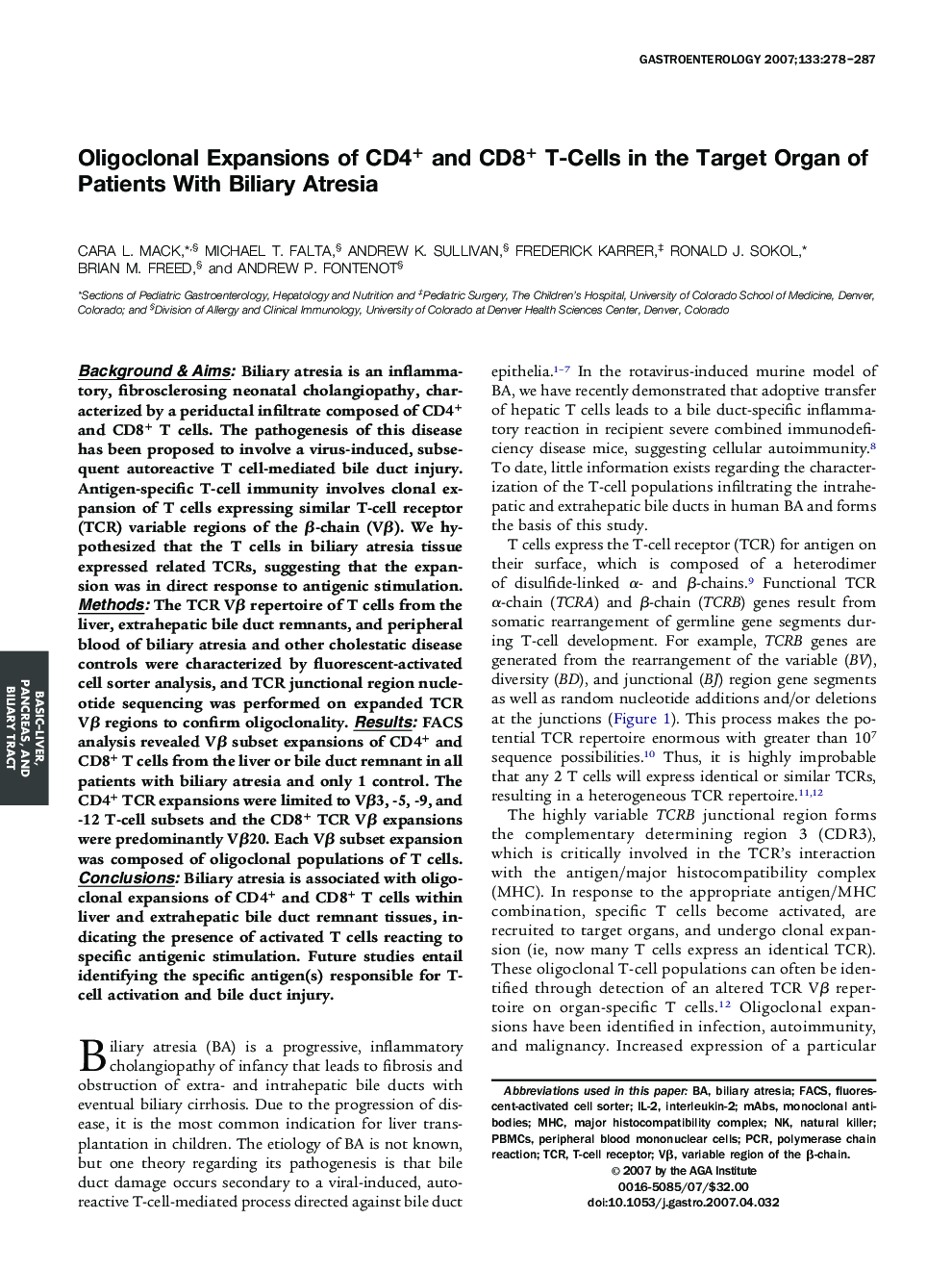| Article ID | Journal | Published Year | Pages | File Type |
|---|---|---|---|---|
| 3296776 | Gastroenterology | 2007 | 10 Pages |
Abstract
Background & Aims: Biliary atresia is an inflammatory, fibrosclerosing neonatal cholangiopathy, characterized by a periductal infiltrate composed of CD4+ and CD8+ T cells. The pathogenesis of this disease has been proposed to involve a virus-induced, subsequent autoreactive T cell-mediated bile duct injury. Antigen-specific T-cell immunity involves clonal expansion of T cells expressing similar T-cell receptor (TCR) variable regions of the β-chain (Vβ). We hypothesized that the T cells in biliary atresia tissue expressed related TCRs, suggesting that the expansion was in direct response to antigenic stimulation. Methods: The TCR Vβ repertoire of T cells from the liver, extrahepatic bile duct remnants, and peripheral blood of biliary atresia and other cholestatic disease controls were characterized by fluorescent-activated cell sorter analysis, and TCR junctional region nucleotide sequencing was performed on expanded TCR Vβ regions to confirm oligoclonality. Results: FACS analysis revealed Vβ subset expansions of CD4+ and CD8+ T cells from the liver or bile duct remnant in all patients with biliary atresia and only 1 control. The CD4+ TCR expansions were limited to Vβ3, -5, -9, and -12 T-cell subsets and the CD8+ TCR Vβ expansions were predominantly Vβ20. Each Vβ subset expansion was composed of oligoclonal populations of T cells. Conclusions: Biliary atresia is associated with oligoclonal expansions of CD4+ and CD8+ T cells within liver and extrahepatic bile duct remnant tissues, indicating the presence of activated T cells reacting to specific antigenic stimulation. Future studies entail identifying the specific antigen(s) responsible for T-cell activation and bile duct injury.
Keywords
Related Topics
Health Sciences
Medicine and Dentistry
Gastroenterology
Authors
Cara L. Mack, Michael T. Falta, Andrew K. Sullivan, Frederick Karrer, Ronald J. Sokol, Brian M. Freed, Andrew P. Fontenot,
